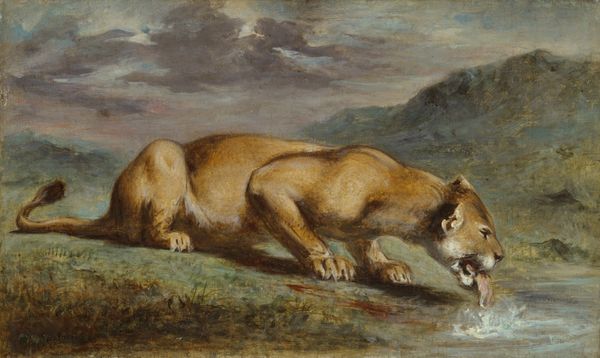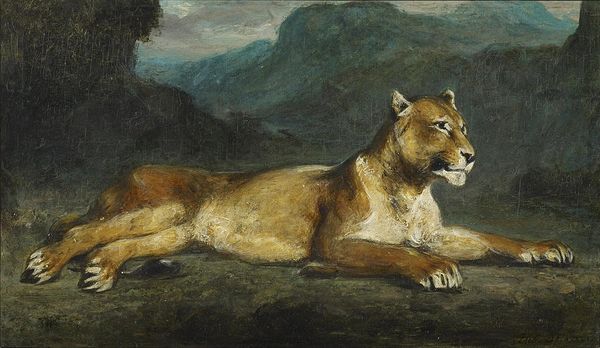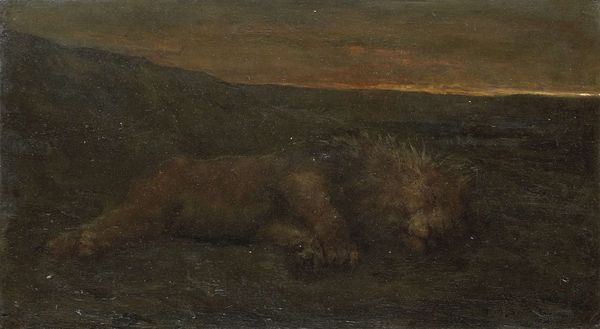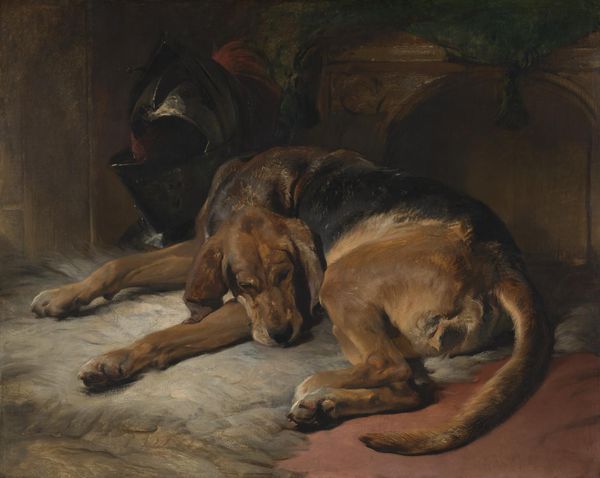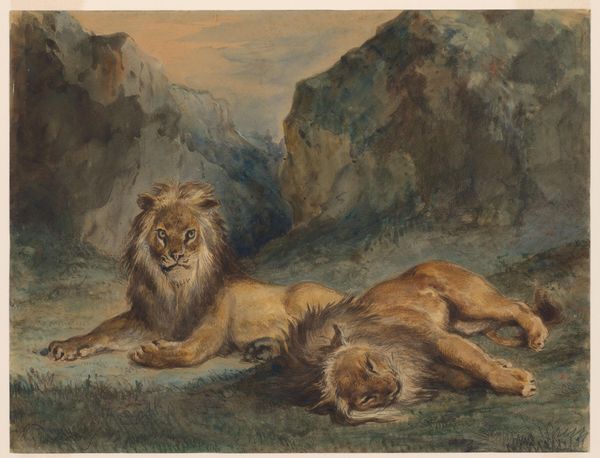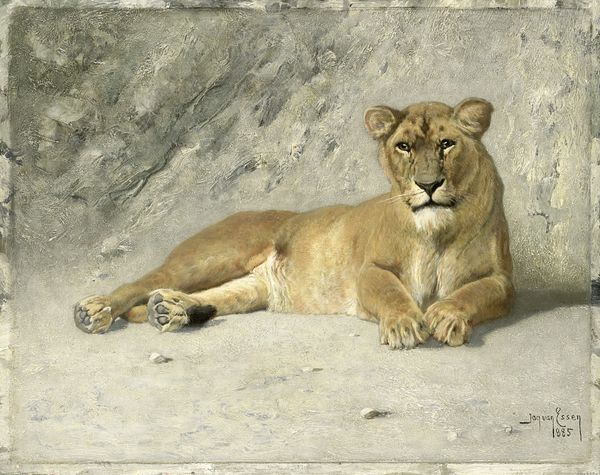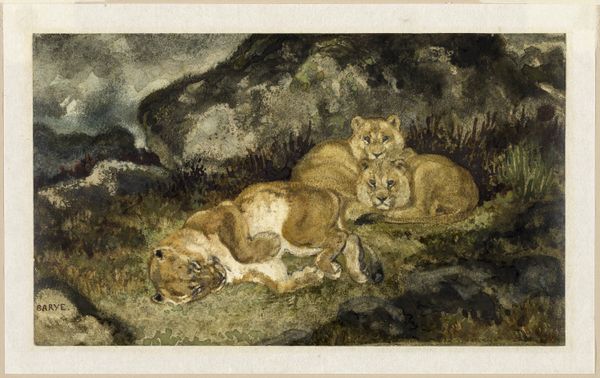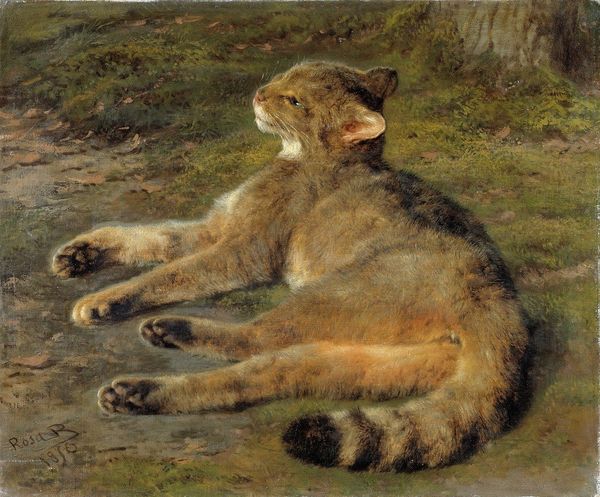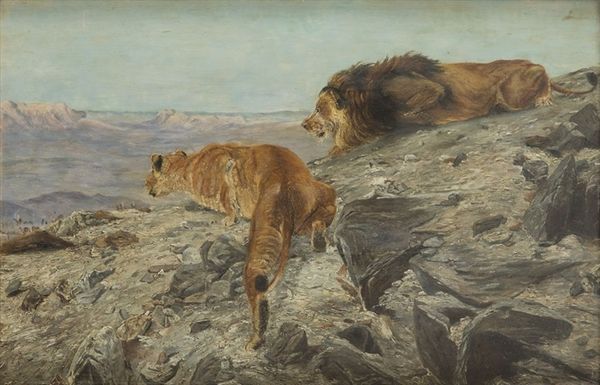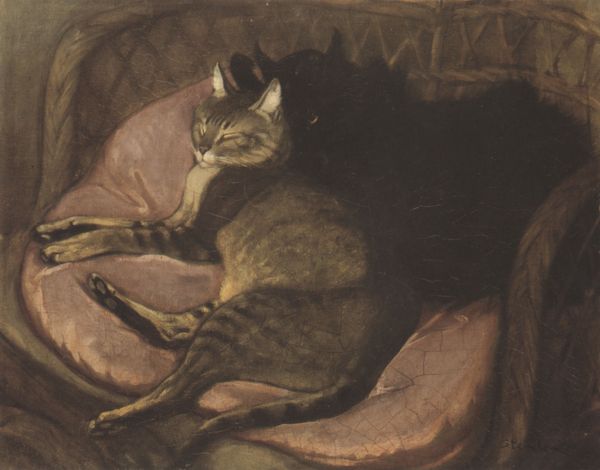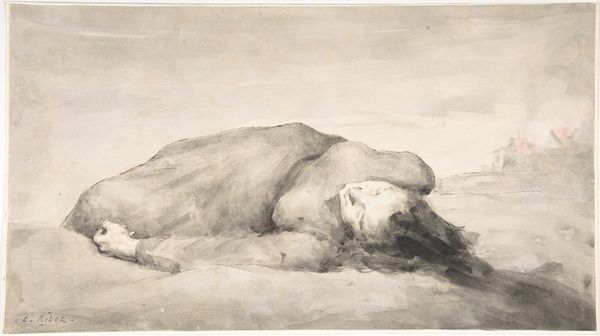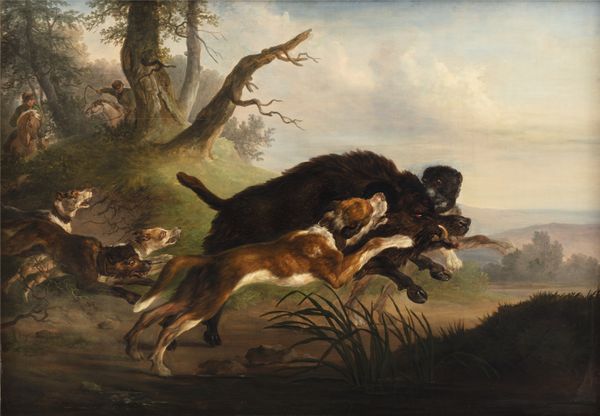
Een leeuwin met vier zogende welpen, genaamd 'Moederliefde' 1870 - 1904
0:00
0:00
painting, oil-paint
#
animal
#
painting
#
oil-paint
#
landscape
#
oil painting
#
underpainting
#
painting painterly
#
genre-painting
#
realism
Dimensions: height 153 cm, width 227 cm, depth 11.5 cm, weight 65 kg
Copyright: Rijks Museum: Open Domain
Curator: Welcome to the Rijksmuseum. Before us is "A Lioness with Four Suckling Cubs, Named 'Motherly Love'", an oil painting executed between 1870 and 1904 by John Macallan Swan. Editor: My immediate impression is of muted tranquility. The palette is almost monochromatic, a sea of browns and tans that create a very grounding, naturalistic image. Curator: Swan was fascinated by big cats, often depicting them in their natural habitats. It’s worth considering how these portrayals engaged with and perhaps shaped popular perceptions of the animal kingdom during the late 19th century, particularly in the context of colonial expansion and increased global travel. The display of animals in circuses and zoos created a context to exoticize the colonial space and thus "other" people. Editor: The formal elements reinforce this sense of subdued calm. Note how the horizontal composition emphasizes the lioness’s recumbent pose. There's a deliberate flattening of perspective, drawing our eye to the surface texture of the oil paint. How do you view its reception based on technique, given it's rather unique. Curator: I believe the use of realism allowed for its appreciation, despite colonial undertones. But what may have begun with honest portrayals evolved and created othering as viewers back home saw wild animals of these lands in captivity. Editor: Interesting, and notice also the way Swan renders the fur—loose, gestural brushstrokes that mimic the animal’s texture without hyperrealism. This textural play engages the eye, pulling it across the canvas. Curator: Beyond its aesthetic qualities, the artwork serves as an artifact, prompting reflections on the power of visual representation and its historical impact. It is crucial to approach such artworks with both appreciation and a critical understanding of their cultural and social contexts. Editor: Agreed. Viewing the composition and considering the themes of motherly love within such a complex context yields interesting discussions and, ultimately, better ways of perceiving history and context within brushstrokes.
Comments
No comments
Be the first to comment and join the conversation on the ultimate creative platform.
